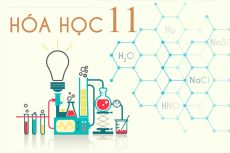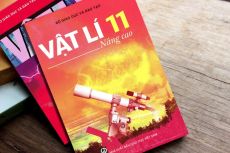Each sentence has a mistake. Find it by chosing A B C or D
In recent years, there have been great increases in a number of engineers and scientists employed in American industries
Suy nghĩ và trả lời câu hỏi trước khi xem đáp án
Lời giải:
Báo saiĐáp án D
A -> the;
a number of + N: một số những N;
the number of N: số lượng những N
Câu hỏi liên quan
-
Read the following passage and choose the best answer (A, B, C, D):
Because the low latitudes of the Earth, the areas near the equator, receive more heat than the latitudes near the poles, and because the nature of heat is to expand and move, heat is transported from the tropics to the middle and high latitudes. Some of this heat is moved by winds and some by ocean currents, and some gets stored in the atmosphere in the form of latent heat. The term “latent heat” refers to the energy that has to be used to convert liquid water to water vapor. We know that if we warm a pan of water on a stove, it will evaporate, or turn into vapor, faster than if it is allowed to sit at room temperature. We also know that if we hang wet clothes outside in the summertime they will dry faster than in winter, when temperatures are colder. The energy used in both cases to change liquid water to water vapor is supplied by heat – supplied by the stove in the first case and by the Sun in the latter case. This energy is not lost. It is stored in water vapor in the atmosphere as latent heat. Eventually, the water stored as vapor in the atmosphere will condense to liquid again, and the energy will be released to the atmosphere. In the atmosphere, a large portion of the Sun’s incoming energy is used to evaporate water, primarily in the tropical oceans. Scientists have tried to quantify this proportion of the Sun’s energy. By analyzing temperature, water vapor, and wind data around the globe, they have estimated the quantity to be about 90 watts per square meter, or nearly 30 percent of the Sun’s energy. Once this latent heat is stored within the atmosphere, it can be transported, primarily to higher latitudes, by prevailing, large-scale winds. Or it can be transported vertically to higher levels in the atmosphere, where it forms clouds and subsequent storms, which then release the energy back to the atmosphere
1. The passage mainly discusses how heat ______________ -
Read the following passage and choose the best answer (A, B, C, D):
Light pollution is excessive, misdirected, or obtrusive artificial (usually outdoor) light. Too much light pollution has (1) __________effects on people. I washes out starlight in the night sky, disrupts ecosystems, has adverse health effects, and wastes energy. With respect to adverse health effects, many species, (2) ___________humans, are dependent on natural body cycles, and the production of melatonin, which are regulated by light and dark (e.g., day and night). If humans are exposed to light (3) ________sleeping, melatonin production can be affected. This can lead to sleep disorders and other health problems such as increased headaches, worker fatigue, medically defined stress, some forms of obesity due to lack of sleep and increased anxiety. And ties are being (4) ________ to a couple of types of cancer. There are also effects of glare on aging eyes. Heath effects are not only due to overillumination or excessive (5) ________of light over time, but also improper spectral composition of light -
Read the following passage and choose the best answer (A, B, C, D):
The aviation industry, especially the commercial aviation sector, is constantly striving to improve both the way it works and its customer satisfaction. It has begun using artificial intelligence. Though AI in the aviation industry is still in the nascent stage, some progress has been made already as certain leading carriers invest in AI. To make a long story short, AI can redefine how the aviation industry goes about its work. In 2017, American Airlines conducted an app development competition with the goal of having an app developed for making baggage screening easier for passengers. The competition, named HackWars, was themed upon artificial intelligence, drones and augmented and virtual reality. The winner, known as “Team Avatar,” developed an app that would not only allow passengers determine their baggage size before arriving at the airport, but also prepay any potential baggage-related expenses. United Airlines is using Amazon’s Alexa to have certain common customer queries answered. In September 2017, United announced a collaboration with Alexa. The feature is known as the United skill. To get started, all passengers need to do is to add the United skill to their Alexa app and then start asking questions. Alexa answers common queries correctly, such as the status of a flight by number, check-in requests and availability of Wi-Fi on a flight. The reviews so far have been mixed, which points to the fact that there is a learning curve, and it is still a long way to go before AI can fully handle customer assistance. Tracking progress is an enormous challenge that airlines will face. The first thing they need to do is to develop analytics that will help them develop and process accurate data. However, that in itself is a challenge. What kind of analytics will help? For example, customer satisfaction is going to be one of the most important factors in success. What kind of analytics will determine that airlines have been improving on customer satisfaction parameters? AI needs huge investments, and probably the biggest risk in this is smaller, especially budget airlines are going to miss out on reaping the benefits of AI fully. Does that mean that the performance of the smaller carriers will be impacted? That might not be the case, because we might be moving toward more acquisitions and mergers. Bigger airlines will have a massive appetite for acquiring smaller airlines with an eye on the market. It is not all gloom and doom though, because smaller airlines like Southwest have already shown some initiatives toward embracing AI. It is surprising that a sector as important as aviation has woken up to AI so late. As AI in aviation picks up its pace, there could probably be a few mergers, acquisitions or even closure of small airlines which will not be able to afford the investments. Now, AI seems the best option to take aviation to the next level.
2. The word “carriers” in paragraph 1 probably means ______ -
Choose the word or phrase A, B, C or D that best fits the blank space in the following passage:
"Face-to-face conversation is a two-way process: you speak to me, I reply to you and so on. Two-way (1)….. depends on having a coding System that is understood by both (2)….. and receiver, and an agreed convention about (3)…. the beginning and end of the (4)… . In speech, the coding System is the language like English or Spanish; the convention that one person speaks at a time may seem too obvious to (5)…. . In fact, the (6)…..that people use in conversations and meetings are often non- verbal. For example, lowering the pitch of voice may mean the end of a sentence; a Sharp intake of breath may signal the desire to (7)….. , catching the chairman’s (8)…. may indicate the desire to speak in a formal setting like a (9)….. , a clenched fist may indicate anger. When these (10)….. signals are not possible, more formal signals may be needed."
9. in a formal setting like a (9)….. , a clenched fist may indicate anger.
-
Read the following passage and choose the best answer (A, B, C, D):
If you were going to choose a job that involves travel, what would be your first choice? There are many jobs available today that give people opportunities to travel. Although may traveling careers sound fantastic, they also have disadvantages. Being an au pair is an excellent way to not only go to different countries, but to live in different places around the world and really get a feel for the culture. Au pairs lives with the families they are placed with and take of children. Many parents include au pairs in family events and vacations, so they experience many aspects of the new culture while on the job. However, many of the activities are centered around the children, so they may not get to experience many things that interest adults. For people who want a bit more freedom working abroad, being an English teacher maybe a good choice. There are English teaching jobs in almost countries in the world. People teaching English in other countries often have a chance to travel on the weekends around the country. One drawback is that many teachers often wind up hanging out with other English teachers, and they don’t have time to learn the country’s language. The nickname “roadie” implies that this job involves life on the road. Roadies are people who work and travel with bands and provide technical support. Roadies can be lighting and stage crew who set up the stage and break it down before and after events. They can also be technicians helping band members with their instruments. International tours take a band’s crew to cities around the world, often requiring air travel. However, the crew doesn’t get much time off, so they may travel to several countries without seeing much besides concert venues and hotels. Similarly, flight attendants often travel to cities around the world, but they don’t see much besides the inside of airplanes and hotels. However, when they do have time off, they can often fly at no cost, and family member can sometimes fly free as well. Its is widely thought that a flight attendant job is glamorous, but flight attendants must deal with travel hassles, as well as security issues. All jobs gave advantages and disadvantages whether or not you travel for work, so if you have the travel bug, keep these jobs in mind for the future.
6. The word “they” in paragraph 1 refers to _______? -
Read the following passage and choose the best answer (A, B, C, D):
Technology has become a fantastic and useful tool in the classroom. Teachers are expected to make (1) _________________ if it to enhance the learning experience and information dissemination. However, knowledge of the different tools available, what they can do, and their impact allows teachers to use them (2) _____________. With numerous technology users actively involved in developing gadgets of the future, we can only specular what new advances will be making their way (3) _______________ classrooms in the coming days. Following the evolution of technology, educational capabilities are changing and growing daily. The internet is a vast library of data that is useful in (4) _________________ the landscape of education as we know it. All in all, technology alone will not change education. Good grades and practical knowledge are as important as ever. Technology in education is therefore simply a catalyst, a tool for conveying lessons (5) _______________ effectiveness cannot be overlooked -
In the mid - nineteenth century, the United States had tremendous natural resources that could be exploited in order to develop heavy industry. Most of the raw materials that are valuable in the manufacture of machinery, transportation facilities, and consumer goods lay ready to be worked into wealth. Iron, coal, and oil - the basic ingredients of industrial growth - were plentiful and needed only the application of technical expertise, organizational skill, and labor.
One crucial development in this movement toward industrialization was the growth of the railroads. The railway network expanded rapidly until the railroad map of the United States looked like a spider's web, with the steel filaments connecting all important sources of raw materials, their places of manufacture, and their centers of distribution. The railroads contributed to the industrial growth not only by connecting these major centers, but also by themselves consuming enormous amounts of fuel, iron, and coal.
Many factors influenced emerging modes of production. For example, machine tools, the tools used to make goods, were steadily improved in the latter part of the nineteenth century - always with an eye to speedier production and lower unit costs. The products of the factories were rapidly absorbed by the growing cities that sheltered the workers and the distributors. The increased urban population was nourished by the increased farm production that, in turn, was made more productive by the use of the new farm machinery. American agricultural production kept up with the urban demand and still had surpluses for sale to the industrial centers of Europe.
The labor that ran the factories and built the railways was recruited in part from American farm areas where people were being displaced by farm machinery, in part from Asia, and in part from Europe. Europe now began to send tides of immigrants from eastern and southern Europe - most of whom were originally poor farmers but who settled in American industrial cities. The money to finance this tremendous expansion of the American economy still came from European financiers for the most part, but the American were approaching the day when their expansion could be financed in their own " money market".
Which of the following in NOT true of United States farmers in the nineteenth century?
-
Mark the letter A, B, C, or D on your answer sheet to indicate the undelined part that needs correction in each of the following questions:
Being aware of one's own emotions - recognizing and acknowledging feelings as they happen - is at the very heart of Emotional Intelligence. And this awareness encompasses not only moods but also thoughts about those moods. People who are able to monitor their feelings as they arise are less likely to be ruled by them and are thus better able to manage their emotions.
Managing emotions does not mean suppressing them; nor does it mean giving free rein to every feeling. Psychologist Daniel Goleman, one of several authors who have popularized the notion of Emotional Intelligence, insisted that the goal is balance and that every feeling has value and significance. As Goleman said, "A life without passion would be a dull wasteland of neutrality, cut off and isolated from the richness of life itself." Thus, we manage our emotions by expressing them in an appropriate manner. Emotions can also be managed by engaging in activities that cheer us up, soothe our hurts, or reassure us when we feel anxious.
Clearly, awareness and management of emotions are not independent. For instance, you might think that individuals who seem to experience their feelings more intensely than others would be less able to manage them. However, a critical component of awareness of emotions is the ability to assign meaning to them - to know why we are experiencing a particular feeling or mood.
Psychologists have found that, among individuals who experience intense emotions, individual differences in the ability to assign meaning to those feelings predict differences in the ability to manage them. In other words, if two individuals are intensely angry, the one who is better able to understand why he or she is angry will also be better able to manage the anger.
Self-motivation refers to strong emotional self-control, which enables a person to get moving and pursue worthy goals, persist at tasks even when frustrated, and resist the temptation to act on impulse. Resisting impulsive behavior is, according to Goleman, "the root of all emotional self- control."
Of all the attributes of Emotional Intelligence, the ability to postpone immediate gratification and to persist in working toward some greater future gain is most closely related to success - whether one is trying to build a business, get a college degree, or even stay on a diet. One researcher examined whether this trait can predict a child's success in school. The study showed that 4-year-old children who can delay instant gratification in order to advance toward some future goal will be “far superior as students” when they graduate from high school than will 4-year-olds who are not able to resist the impulse to satisfy their immediate wishes.The word “pursue” in paragraph 4 mostly means .
-
Choose the best answer:
Which activities do you think would be difficult ________ blind and deaf people? -
Read the following passage and choose the best answer (A, B, C, D):
If you go back far enough, everything lived in the sea. At various points in evolutionary history, enterprising individuals within many different animal groups moved out onto the land, sometimes even to the most parched deserts, taking their own private seawater with them in blood and cellular fluids. In addition to the reptiles, birds, mammals and insects which we see all around us, other groups that have succeeded out of water include scorpions, snails, crustaceans such as woodlice and land crabs, millipedes and centipedes, spiders and various worms. And we mustn’t forget the plants, without whose prior invasion of the land, none of the other migrations could have happened. Moving from water to land involved a major redesign of every aspect of life, including breathing and reproduction. Nevertheless, a good number of thoroughgoing land animals later turned around, abandoned their hard-earned terrestrial re-tooling, and returned to the water again. Seals have only gone part way back. They show us what the intermediates might have been like, on the way to extreme cases such as whales and dugongs. Whales (including the small whales we call dolphins) and dugongs, with their close cousins, the manatees, ceased to be land creatures altogether and reverted to the full marine habits of their remote ancestors. They don’t even come ashore to breed. They do, however, still breathe air, having never developed anything equivalent to the gills of their earlier marine incarnation. Turtles went back to the sea a very long time ago and, like all vertebrate returnees to the water, they breathe air. However, they are, in one respect, less fully given back to the water than whales or dugongs, for turtles still lay their eggs on beaches. There is evidence that all modern turtles are descended from a terrestrial ancestor which lived before most of the dinosaurs. There are two key fossils called Proganochelys quenstedti and Palaeochersis talampayensis dating from early dinosaur times, which appear to be close to the ancestry of all modern turtles and tortoise. You might wonder how we can tell whether fossil animals lived in land or in water, especially if only fragments are found. Sometimes it’s obvious. Ichthyosaurs were reptilian contemporaries of he dinosaurs, with
fins and streamlined bodies. The fossils look like dolphins and they surely lived like dolphins, in the water. With turtles it is a little less obvious. One way to tell is by measuring the bones of their forelimbs.
3. As mentioned in paragraph 2, which of the following species returned to the water least completely? -
Read the following passage and choose the best answer (A, B, C, D):
Human beings are plagued by all kinds of diseases and millions of people die from them. Many of these diseases such as diabetes, polio, whooping cough and diphtheria can be fatal and in the past, people used to die from them. However, with modern technology and a lot of research, scientists and doctors have come up with various ways to cure these diseases, and consequently, many lives are saved. In doing the medical research, doctors have come face to face with many problems. One such problem is the opposition that comes from animal activists. They are against the inhuman treatment of animals. They argue that in conducting their medical research, doctors put animals through a very painful process and this should be stopped. According to the fiercest animal activists, nothing justifies the use of animals in medical experiments, even if lives might be saved. To get their message across, animal activists are even willing to resort to the use of violence. Many animal protection groups, like the Animal Liberation Front (ALF), have broken into laboratories illegally to ‘rescue’ animals. They take away whatever animals they can find and free them. These people also make their case by threatening the researchers. They vandalize medical equipment, and in the most serious cases, they even . In stealing the animals, the activists are actually hindering the progress of medicine. In many cases, the animals were part of research for the cure for various diseases and visual defects in babies. Cures for problems that people face, therefore, come slower and in the waiting period, more people die. Researchers have come up with many cures in the process of working with animals and on animals. Organ transplants are so common today, but we forget that they became only possible after they were tested on animals. Doctors were able to come up with a cure for river blindness, a disease that affects millions of people in South America and Africa. These are only a few examples, and there are many more. In spite of what animal activists think, most researchers do not treat animals cruelly. In fact, mistreated animals which are in agony will affect the quality of research so that results obtained are not really reliable. Thus, researchers do try to treat animals as well as possible. In the long run, animal activists can cause serious damage to the future of medicine. With their persistent campaigning, much of the public supports their cause. People with AIDS or cancer need doctors to do research to save their lives, and often it is a case where animal research is crucial before any cure can be found
3. The phrase “resort to” in paragraph 3 is closest in meaning to ____ -
Read the following passage and choose the best answer (A, B, C, D):
Light-emitting diodes (LEDs) are now considered the future of lighting due to a lower energy requirement to run, a lower monthly price tag, and a longer life than traditional incandescent light bulbs. Nick Holonyak, an American scientist at General Electric, accidently invented the red LED light while trying to create a laser in the early 1960s. As with other inventors, the principle that some semiconductors glowed when an electric current was applied had been known since the early 1900s, but Holonyak was the first to patent it for use as a light fixture. Within a few years, yellow and green LEDs were added to the mix and used in several applications including indicator lights, calculator displays, and traffic lights, according to the DOE. The blue LED was created in the early 1990s by Isamu Akasaki, Hiroshi Amano, and Shuji Nakamura, a group of Japanese and American scientists, and for which they won the 2014 Nobel Prize in Physics. The blue LED allowed scientists to create white LED light bulbs by coating the diodes with phosphor Today, lighting choices have expanded and people can choose different types of light bulbs, including compact fluorescent (CFL) bulbs work by heating a gas that produces ultraviolet light and LED bulbs. Several lighting companies are pushing the boundaries of what light bulbs can do, including Phillips and Stack. Phillips is one of several companies that have created wireless light bulbs that can be controlled via smartphone app. The Phillips Hue uses LED technology that can quickly be turned on or off or dimmed by a flick on a smart phone screen and can also be programmed. The higher-end Hue light bulbs can even be set to a large range of colors (only about sixteen million) and synced with music, movies, and video games. Stack, begun by engineers from Tesla and NASA, developed a smart light bulb using LED technology with a wide range of functions. It can automatically sense the ambient lighting and adjust as needed, it turns off and on via motion sensor when someone enters the room, can be used as a wake up alert, and even adjusts color throughout the day to fit with human’s natural circadian cycles and patterns of natural light. The light bulbs also have a built-in learning program that adapts to inputs given by residents over time. And all of these functions can be programmed or monitored from any smart phone or tablet. It is estimated that Stack smart light bulbs can use about sixty percent less energy than a typical LED light bulb and lasts between twenty and thirty thousand hours depending on the model . These light bulbs are compatible (or soon will be) with many of the options for turning an entire home into a smart home including usage with Amazon Alexa, Google Home, and Apple HomeKit.
7. Which of the following is TRUE according to the passage? -
Read the following passage and mark the letter A, B, C, or D on your answer sheet to indicate the correct answer to each of the following questions:
The ruined temples of Angkor are perhaps one of the most impressive Seven Wonders of the World. Located in modern day Cambodia near Lake Tonle Sap, the largest freshwater lake in Asia, Angkor was the seat of power for the Khmer Empire for the ninth to the fifteenth century. The ruins of Angkor are documented as some of the most impressive ones in the world, rivaling the pyramids of Giza in Egypt. Why this mighty civilization died out is a question that archaeologists are now only beginning to ponder. The answer, it turns out, may be linked with the availability of fresh water.
One possible explanation for the downfall of the Khmer Empire has to do with the inhabitant’s irrigation system. The temples and palaces of Angkor were constructed around a series of artificial reservoirs and canals which were annually flooded to capacity by the Mekong River. Once filled, they were used to irrigate the surrounding paddies and farmland during the course of the year. Farmers were completely dependent on the water for their crucial rice crop. Without consistent irrigation, the farmers would have been unable to maintain functional crop production.
Scientists speculate that toward the end of the Khmer Empire the hydraulic system of the reservoirs and canals broke down. The construction of hundreds of sandstone temples and palaces required an enormous amount of physical labor. In addition, as the capital of Khmer Empire, Angkor contained upwards of one hundred thousand people who resided in and around Angkor. In order to feed so many people, the local farmers were driven to grow food more quickly and more efficiently. After centuries of continual use, the irrigation system was pushed beyond its capacity. Soil erosion, nutrient depletion, and loss of water led to decrease in the food supply. With the less food available, the people of Angkor slowly began to migrate to other parts of Cambodia, thus leaving the marvelous city of Angkor to be swallowed by the jungle. Therefore, it is speculated that the Khmer Empire may have fallen victim to its own decrepit infrastructure.The word “seat” in paragraph 1 is closest in meaning to .
-
Read the following passage and choose the best answer (A, B, C, D):
According to the American Red Cross, there’s a 97% chance that someone you know will need a blood transfusion. Blood donors — especially donors with certain blood types — are always in demand. To donate blood, the American Red Cross requires that people be at least 17 years old and weigh more than 110 pounds. (In some states, the age is 16 with a parent’s permission.) Donors must be in good health and will be screened for certain medical conditions, such as anemia. Donors who meet these requirements can give blood every 56 days. Blood donation starts before you walk in the door of the blood bank. Eat a normal breakfast or lunch — this is not a good time to skip meals — but stay away from fatty foods like burgers or fries. And be sure to drink plenty of water, milk, or other liquids. Before donating, you’ll need to answer some questions about your medical history, and have your temperature, pulse, blood pressure, and blood count checked. The medical history includes questions that help blood bank staff decide if a person is healthy enough to donate blood. They’ll probably ask about any recent travel, infections, medicines, and health problems. Donated blood gets tested for viruses, including HIV (the virus that causes AIDS), hepatitis B, hepatitis C, syphilis, and West Nile virus. If any of these things are found, the blood is destroyed. Because blood can be infected with bacteria as well as viruses, certain blood components are tested for contamination with bacteria as well. Are there any risks? A person can’t get an infection or disease from giving blood. The needles and other equipment used are sterile and they’re used only on one person and then thrown away. The U.S. Food and Drug Administration (FDA) regulates U.S. blood banks. All blood centers must pass regular inspections in order to keep operating. Sometimes people who donate blood notice a few minor side effects like nausea, lightheadedness, dizziness, or fainting, but these symptoms usually go away quickly. The donor’s body usually replaces the liquid part of blood (plasma) within 72 hours after giving blood. It generally takes about 4–8 weeks to regenerate the red blood cells lost during a blood donation. An iron-fortified diet plus daily iron tablets can help rebuild a donor’s red blood supply. The Red Cross estimates that 15% of all blood donors in the United States are high school or college students — an impressive number when you consider you have to be 16 or 17 to donate blood. If you are eligible and want to donate blood, contact your local blood bank or the American Red Cross for more information on what’s involved. You could save someone’s life.
7. What can be inferred from the passage about the risks from donation? -
Read the following passage and choose the best answer (A, B, C, D):
Carols were first sung in Europe thousands of years ago, but these were not Christmas Carols. They were pagan songs, sung at the Winter Solstice celebrations as people danced round stone circles. Carols used to be written and sung during all four seasons, but only the tradition of singing them at Christmas has really survived. Early Christians took over the pagan solstice celebrations for Christmas and gave people Christian songs to sing instead of pagan ones. However, not many people liked them as they were all written and sung in Latin, a language that the normal people couldn’t understand. This was changed by St. Francis of Assisi when, in 1223, he started his Nativity Plays in Italy. The people in the plays sang songs or ‘canticles’ that told the story during the plays. Sometimes, the choruses of these new carols were in Latin; but normally they were all in a language that the people watching the play could understand and join in! The new carols spread to France, Spain, Germany and other European countries. The earliest carol, like this, was written in 1410. Sadly only a very small fragment of it still exists. Most Carols from this time and the Elizabethan period are untrue stories, very loosely based on the Christmas story, about the holy family and were seen as entertaining rather than religious songs. They were usually sung in homes rather than in churches! Traveling singers or Minstrels started singing these carols and the words were changed for the local people wherever they were traveling. Before carol singing in public became popular, there were sometimes official carol singers called ‘Waits’. These were bands of people led by important local leaders who had the only power in the towns and villages to take money from the public. Also, at this time, many orchestras and choirs were being set up in the cities of England and people wanted Christmas songs to sing, so carols once again became popular. New carols services were created and became popular, as did the custom of singing carols in the streets. Both of these customs are still popular today! One of the most popular types of Carols services are Carols by Candlelight services. At this service, the church is only lit by candlelight and it feels very Christmassy! Carols by Candlelight services are held in
countries all over the world.
6. The following statements are true, EXCEPT ________ -
Read the following passage and choose the best answer (A, B, C, D):
For many years, scientists have speculated that the cataclysmic impact of an asteroid with the earth was responsible for the demise of the dinosaurs approximately 65 million years ago. Previous discoveries and results have hinted that an asteroid two kilometers in diameter struck the Yucatan peninsula in Eastern Mexico. This impact, stronger than one thousand nuclear explosions, is speculated to have cast a cloud of dust and debris into the atmosphere, covering the entire surface of the earth and blocking out the sun and consequently lowering the surface temperature of the earth. With such a radical change in the earth's environment, scientists believe that over 99% of all animal and plant species were eradicated. Only after millions of years did plants and animals even begin to recover and develop into forms that were better adapted to survive changes in their environment. But, the reign of the dinosaurs had ended and the age of mammals had begun. The crucial link that has held this theory together has been the element iridium. Iridium is not commonly found on either the surface of the earth or inside the crust. It is more commonly found in asteroids or meteorites throughout the solar system. Scientists have hypothesized that after the asteroid impacted the Earth, an even layer of iridium sediment settled over the globe and eventually became part of its surface. The theory, of course, has depended on the discovery of such an existing layer of iridium. Unfortunately, scientists have never been able to offer absolute proof that this asteroid impact ever occurred. Recently, however, a discovery may go a long way toward validating these scientists 'theories. In 1996, a team of marine biologists excavated samples of rock from the Atlantic Ocean just off the cost of Bermuda. Found thousands of meters below the sea, these samples contain iridium similar to those found in the Yucatan peninsula thousands of kilometers away. At first, scientists were skeptical whether the samples were from the same time period. But since carbon dating placed them to 65 million years ago, their doubts were quickly alleviated. Since then many of the other theories for the demise of the dinosaur have been finally laid to rest.
4. The word "cast" is closest in meaning to: -
Read the following passage and choose the best answer (A, B, C, D):
Mohammed BK, who aims to connect Somalis in Bristol with their heritage, has been confirmed for the Somali Week Festival, in 2020. Mohammed BK has been named as “cultural ambassador” for the Somali community. Ayan Mohamoud who is UK’s Somaliland Ambassador told the BBC he will now become a fixed part of the annual festivities. She said: “Young people who don’t speak Somali at all have memorised his music word-for-word and that is something that has never been done before by any Somali artist. He has been touring the country promoting citizenship and cultural unity throughout his career.” Susan Elmi, 25, has been a fan of Mohammed BK for many years. She said: "In the Somali culture many people communicated their emotions and thoughts through songs and poetry and this is going back centuries. This man is bringing that back and making the younger generation question and explore our rich legacy. I think it’s just what the Somali Diaspora needs to say well connected to the identity.” Mohammed BK also promotes education and advises young people to “use their time and resources wisely here in the UK because that is something their parents sacrificed fleeing from their homeland”. He added: “I thought to myself if I have that much influence on thousands and thousands of young people from my community, I need to put my platform to good use in encouraging them to do good and seek opportunities”. Festival fan Ameira Hassan, 45, said: “It’s a huge thing for our kids to take part in their history and culture. It’s important to us because they are learning a lot. Twenty years ago we never used to have anything like this in the UK and our kids never had any knowledge of the Somali culture.”
2. According to paragraph 1, what is correct about the singer Mohammed BK? -
Read the following passage and choose the best answer (A, B, C, D):
It’s extremely important for kids of middle childhood to continue, or to start to lead a healthy lifestyle, including eating nutritious meals as well as getting plenty of exercise and adequate sleep every day. These positive health habits will help children grow strong, stay healthy, and decrease the likelihood that they will become obese. Childhood obesity rates have increasing dramatically in recent years. According to the Centers for Disease Control, in 2004, 18.8% of school-aged children were obese, versus 4% of children 30 years before in 1974. Children’s skyrocketing rate of obesity is worrisome because it greatly increases children’s risk for remaining obese in adulthood, which in turn raises their risk for heart disease, stroke, cancer, diabetes, and premature death as adults. Obese children may also develop associated health problems during the middle childhood stage, such as high blood pressure, high cholesterol levels, and respiratory problems. Obesity can also set the stage for problems with self esteem, depression, anxiety and social ostracism, and/or being victimized by bullies Healthy diet and adequate exercise are important in preventing Type II diabetes in childhood as well as obesity. Diabetes is a metabolic disease in which the body cannot properly metabolize the sugars from food. Because the body cannot metabolize sugars, the sugars accumulate in the bloodstream instead and ultimately stress children’s kidneys, heart, circulatory system, and eyes. Insulin, which is created in the pancreas, is the chemical that breaks down blood sugar. In Type II diabetes, the body does not produce enough insulin to deal with all the sugars coming into the body. This medical diagnosis used to be called “adult-onset diabetes” because the disorder primarily affected adults with poor eating and activity habits. Today, however, this illness is now diagnosed in America’s children far more than in adults. It is now referred to as “Type II diabetes”, to reflect this shift in prevalence. In contrast to the many youth in America who overeat and don’t get enough exercise, other children become obsessed with over-controlling their food intake and with exercising too much. With the constant barrage of perfect, photoshopped bodies in the media today, many children are feeling pressure at younger and younger ages to imitate those images. Children as young as 6 are reporting that they are trying to lose weight by dieting. Overemphasis on extreme thinness can put children at risk for poor self-esteem, unhealthy exercise patterns, and eating disorders such as anorexia and bulimia. Children who embrace healthy eating and exercise habits during middle childhood will have a much easier time maintaining a healthy lifestyle through adolescence and adulthood than individuals who try to make the shift later in life. Teaching children to habitually eat moderate portion sizes and to choose healthy foods in preference to junk foods becomes increasingly important as children begin to spend more time away from home and gain more independence over their food and activity choices. Even though parents have less control over their children’s eating habits during middle childhood than when children were younger, it remains vital that parents continue to reinforce children’s healthy habits whenever possible.
3. What is author’s main idea in paragraph 2? -
Read the following passage and choose the best answer (A, B, C, D):
Certain birds are, more often than not, considered bad luck, or even a sign of impending death. For example, all over the world, both crows and ravens have some connection to war, and death. In early times, crows and ravens were thought to accompany the gods of war, or be signs of the gods’ approaching arrival. This idea later changed. Crows in particular were thought to be harbingers of ill fortune or, in some cases, guides to the afterlife. Woe be it to the person who saw a single crow or raven flying overhead, for this was most certainly a portent of death in the near future. Interestingly, though potentially bad luck for people individually, the raven is considered to be good luck for the crown of England. So much so, in fact, that a “raven master” is, even today, an actual government position in London. He takes care of the ravens there and also clips their wings, ensuring that these birds can never fly far from the seat of the British government. This way, the kingdom will never fall to ill fortune. Another bird that is thought to play a part in forecasting the fortunes of people is the swallow. Depending on how and when it is seen, the swallow can be a harbinger of either good or ill fortune. Perhaps inspired by the swallow’s red-brown breast, Christian people initially related the swallow to the death of Jesus Christ. Thus, people who saw a swallow fly through their house considered it a portent of death. Later, however, farmers began to consider swallows signs of good fortune. Any barn that has swallows living in it is sure to be blessed in the following year. Farmers also have to beware of killing a swallow; that would be certain to end any good luck they might have had. Though many people think these superstitions are old wives’ tales, there is actually some evidence to support them. For example, crows and ravens, being scavengers, appear at the aftermath of battles. Thus, large numbers of crows and ravens could be good indications of war in an area. As well, swallows feed on insects that can cause infections in cattle. Thus, a farmer who has many swallows in his barn may actually have healthier animals on his farm. Therefore, the next time you feel inclined to laugh at an old wives’ tale, maybe you had better find out if there is any truth to it first!
5. As mentioned in the passage, the swallow originally was considered as ___________ -
rewrite the sentence:
I haven't got used to Indian food although I have lived here for three months.











